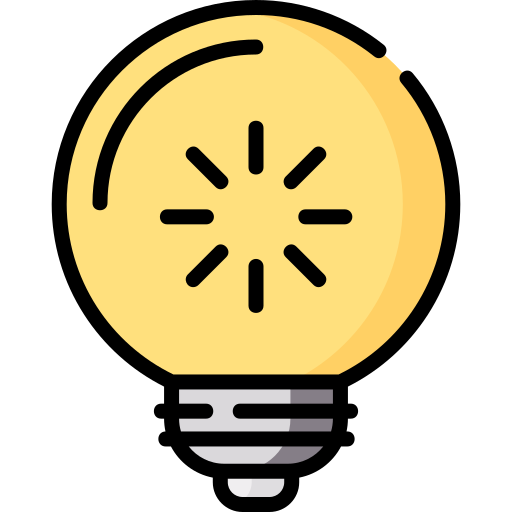IPMAT (I) 2020 QASA | Previous Year IPMAT - Indore Paper
Get your concepts cleared through our Self-Study Courses.
Join our Telegram Channel for CAT/MBA Preparation.
In a division problem, product of quotient and the remainder is 24 while their sum is 10. If the divisor is 5 then dividend is __________.
Answer: 34
Get your concepts cleared through our Self-Study Courses.
Join our Telegram Channel for CAT/MBA Preparation.
Explanation :
Let the dividend be N, Quotient be Q and Remainder be R.
Given, Divisor = 5
∴ N = 5 × Q + R
Given, QR = 24 and Q + R = 10
Since Q and R are integers, the only possible value for Q and R will be 6 or 4 in any order.
Here, the divisor is 5 and hence remainder cannot be greater than 5, hence R = 4 and Q = 6.
⇒ N = 5 × 6 + 4 = 34.
Hence, 34.
Workspace:
The shortest distance from the point (-4,3) to the circle x2 + y2 = 1 is __________.
Answer: 4
Get your concepts cleared through our Self-Study Courses.
Join our Telegram Channel for CAT/MBA Preparation.
Explanation :
The center of the given circle is at (0, 0) and its radius = 1.
 2020 circle.png)
The shortest distance between the point (-4, 3) and the circle = distance between (-4, 3) and the center - radius of the circle.
= OM - ON
= - 1
= 5 - 1
= 4.
Hence, 4.
Workspace:
The value of is _________.
Answer: 16
Get your concepts cleared through our Self-Study Courses.
Join our Telegram Channel for CAT/MBA Preparation.
Explanation :
Given,
=
=
=
=
=
=
=
=
=
= 16.
Hence, 16.
Workspace:
Suppose = 0 where a, b and c are distinct real numbers. If a = 3, then the value of abc is
Answer: 1
Get your concepts cleared through our Self-Study Courses.
Join our Telegram Channel for CAT/MBA Preparation.
Explanation :
Given, = 0
⇒ + = 0
⇒ abc × - = 0
⇒ abc × + = 0
⇒ abc × - = 0
⇒ (abc - 1) × = 0
≠ 0
∴ abc - 1 = 0
⇒ abc = 1
Hence, 1.
Workspace:
The minimum value of f(x) = |3 - x| + |2 + x| + |5 - x| is equal to __________.
Answer: 7
Get your concepts cleared through our Self-Study Courses.
Join our Telegram Channel for CAT/MBA Preparation.
Explanation :
Given, |3 - x| + |2 + x| + |5 - x|
= |x - 3| + |x + 2| + |x - 5|
= |x + 2| + |x - 3| + |x - 5|
Here, the critical points are -2, 3 and 5.
The minimum possible value of |x + 2| + |x - 5| is when x is between -2 and 5.
The minimum possible value of |x - 3| is when x = 3.
∴ x = 3 minimises |x + 2| + |x - 3| + |x - 5|.
⇒ Minimum value of |x + 2| + |x - 3| + |x - 5| = |3 + 2| + |3 - 3| + |3 - 5|
= 5 + 0 + 2 = 7
Hence, 7.
Workspace:
Ashok purchased pens and pencils in the ratio 2: 3 during his first visit and paid Rs. 86 to the shopkeeper. During his second visit, he purchased pens and pencils in the ratio 4: 1 and paid Rs. 112 . The cost of a pen as well as a pencil in rupees is a positive integer. If Ashok purchased four pens during his second visit, then the amount he paid in rupees for the pens during the second visit is __________.
Answer: 100
Get your concepts cleared through our Self-Study Courses.
Join our Telegram Channel for CAT/MBA Preparation.
Explanation :
Let the price of each pen and pencil be x and y respectively.
1st Visit:
Let the number one pens and pencils bougth be 2a and 3a respentively.
⇒ 2a × x + 3a × y = 86 ...(1)
2nd Visit:
Number of pens and pencils bougth are 4 and 1 respectively.
⇒ 4 × x + 1 × y = 112 ...(2)
(1) × 2 - (2) × a
⇒ 4ax + 6ay - (4ax + ay) = 172 - 112a
⇒ 5ay = 172 - 112a
⇒ y = (172 - 112a)/5a
Since a and y are positive integers, the only possible value of a = 1.
∴ y = 12
Substituting y = 12 in (2), we get x = 25.
∴ Amount he paid for pens during 2nd visit = 4x = Rs. 100
Hence, 100.
Workspace:
In a four-digit number, the product of thousands digit and units digit is zero while their difference is 7. Product of the middle digits is 18 . The thousands digit is as much more than the units digit as the hundreds digit is more than the tens digit. The four-digit number is __________.
Answer: 7920
Get your concepts cleared through our Self-Study Courses.
Join our Telegram Channel for CAT/MBA Preparation.
Explanation :
Let the number be 'abcd'. [a, b, c, d and single digit positive integers.]
Given,
a × d = 0
a cannot be 0 since the given number has to be a 4 digit number, hence d = 0
Also, a - d = 7
⇒ a = 7
Also, b × c = 18 ...(1)
The thousands digit is as much more than the units digit as the hundreds digit is more than the tens digit
⇒ a - d = b - c = 7 ...(2)
From (1) and (2), we get
b = 9 and c = 2.
∴ The number is 7920.
Hence, 7920.
Workspace:
Out of 80 students who appeared for the school exams in Mathematics (M), Physics (P) and Chemistry (C), 50 passed M , 30 passed P and 40 passed C. At most 20 students passed M and P at most 20 students passed P and C and at most 20 students passed C and M. The maximum number of students who could have passed all three exams is __________.
Answer: 20
Get your concepts cleared through our Self-Study Courses.
Join our Telegram Channel for CAT/MBA Preparation.
Explanation :
To maximise the number of students who passed in all the three exams we will assume that no one failed in all the three exams.
∴ M ∪ P ∪ C = M + P + C - M ∩ P - P ∩ C - C ∩ M + M ∩ P ∩ C
⇒ M ∪ P ∪ C - (M + P + C) + M ∩ P + P ∩ C + C ∩ M = M ∩ P ∩ C
To maximise the number of students who passed in all the three exams we need to maximise M ∩ P and P ∩ C and C ∩ M.
Maximum value of M ∩ P =20, that of P ∩ C =20 and that of C ∩ M = 20
∴ 80 - (50 + 30 + 40) + 20 + 20 + 20 + M ∩ P ∩ C
⇒ 20 = M ∩ P ∩ C
Hence, 20.
Workspace:
Two friends run a 3-kilometer race along a circular course of length 300 meters. If their speeds are in the ratio 3:2, the number of times the winner passes the other is __________.
Answer: 3
Get your concepts cleared through our Self-Study Courses.
Join our Telegram Channel for CAT/MBA Preparation.
Explanation :
Since the ratio of their speeds is 3 : 2, they will meet at only one point on the circular track and that point will be the starting point.
Hence, when they meet for the first time, the faster person travels 3 rounds, the slower person would travel 2 rounds.
i.e., when the faster person travels 3 × 300 = 900 meters, they meet once.
∴ When the faster person travels 2700 (3 × 900) meters, they would have met 3 times.
To meet for the 4th time faster person needs to travel 900 meters more, but he has only 300 meters of the race left.
∴ Now the faster person would complete the race before they meet for the 4th time.
Hence, 3.
Workspace:
Out of 13 objects, 4 are indistinguishable and rest are distinct. The number of ways we can choose 4 objects out of 13 objects is __________.
Answer: 256
Get your concepts cleared through our Self-Study Courses.
Join our Telegram Channel for CAT/MBA Preparation.
Explanation :
Case 1: All 4 objects are distinct.
Number of ways of choosing 4 distinct objects out of 9 = 9C4.
∴ Total number of such ways = 1 way.
Case 2: 3 objects are distinct and 1 is indistinguishable.
Number of ways of choosing 3 distinct objects out of 9 = 9C3.
Number of ways of choosing 1 indistinguishable object out of 4 = 1.
∴ Total number of such ways = 9C3 × 1 = 9C3.
Case 3: 2 objects are distinct and 2 are indistinguishable.
Number of ways of choosing 2 distinct objects out of 9 = 9C2.
Number of ways of choosing 2 indistinguishable object outs of 4 = 1.
∴ Total number of such ways = 9C2 × 1 = 9C2.
Case 4: 1 object is distinct and 3 are indistinguishable.
Number of ways of choosing 1 distinct objects out of 9 = 9C1.
Number of ways of choosing 3 indistinguishable objects out of 4 = 1.
∴ Total number of such ways = 9C1 × 1 = 9C1.
Case 5: All 4 are indistinguishable.
Number of ways of choosing 0 distinct objects out of 9 = 9C0.
Number of ways of choosing 4 indistinguishable objects out of 4 = 1.
∴ Total number of such ways = 9C1 × 1 = 9C1.
⇒ Total number of ways = 9C4 + 9C3 + 9C2 + 9C1 + 9C0 = 256
Hence, 256.
Workspace:
Feedback
Help us build a Free and Comprehensive Preparation portal for various competitive exams by providing us your valuable feedback about Apti4All and how it can be improved.
 Solution
Solution Discuss
Discuss Report
Report